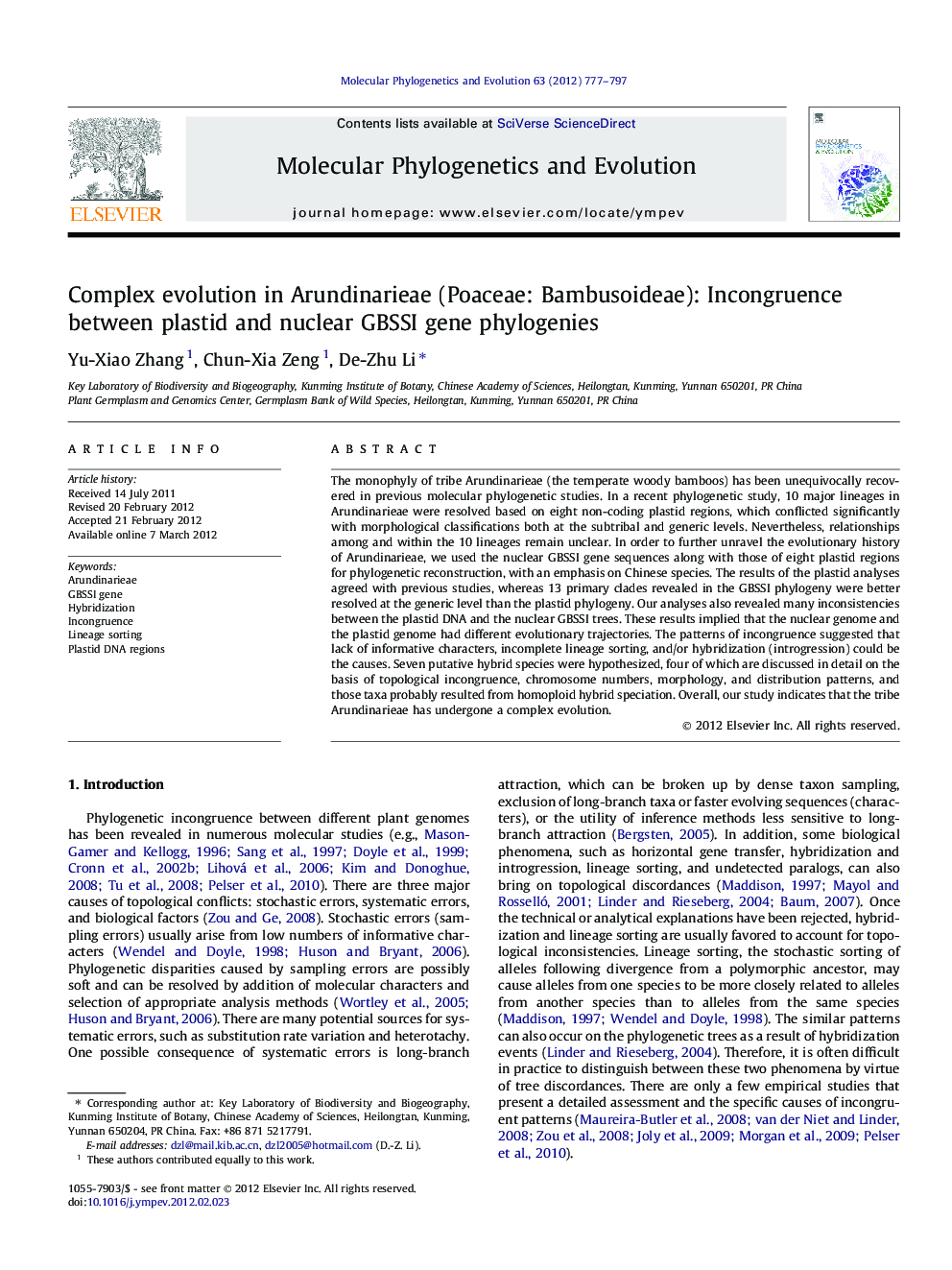| Article ID | Journal | Published Year | Pages | File Type |
|---|---|---|---|---|
| 2834142 | Molecular Phylogenetics and Evolution | 2012 | 21 Pages |
The monophyly of tribe Arundinarieae (the temperate woody bamboos) has been unequivocally recovered in previous molecular phylogenetic studies. In a recent phylogenetic study, 10 major lineages in Arundinarieae were resolved based on eight non-coding plastid regions, which conflicted significantly with morphological classifications both at the subtribal and generic levels. Nevertheless, relationships among and within the 10 lineages remain unclear. In order to further unravel the evolutionary history of Arundinarieae, we used the nuclear GBSSI gene sequences along with those of eight plastid regions for phylogenetic reconstruction, with an emphasis on Chinese species. The results of the plastid analyses agreed with previous studies, whereas 13 primary clades revealed in the GBSSI phylogeny were better resolved at the generic level than the plastid phylogeny. Our analyses also revealed many inconsistencies between the plastid DNA and the nuclear GBSSI trees. These results implied that the nuclear genome and the plastid genome had different evolutionary trajectories. The patterns of incongruence suggested that lack of informative characters, incomplete lineage sorting, and/or hybridization (introgression) could be the causes. Seven putative hybrid species were hypothesized, four of which are discussed in detail on the basis of topological incongruence, chromosome numbers, morphology, and distribution patterns, and those taxa probably resulted from homoploid hybrid speciation. Overall, our study indicates that the tribe Arundinarieae has undergone a complex evolution.
Graphical abstractFigure optionsDownload full-size imageDownload as PowerPoint slideHighlights► Thirteen major lineages were recovered in the GBSSI tree of Arundinarieae. ► Several of those lineages were inconsistent with the plastid tree. ► The incongruence indicated complex evolution in the temperate woody bamboos. ► Chimonocalamus fimbriatus and C. pallens may experience plastid introgression. ► Bashania fargesii and other three species were postulated to be of hybrid origin.
